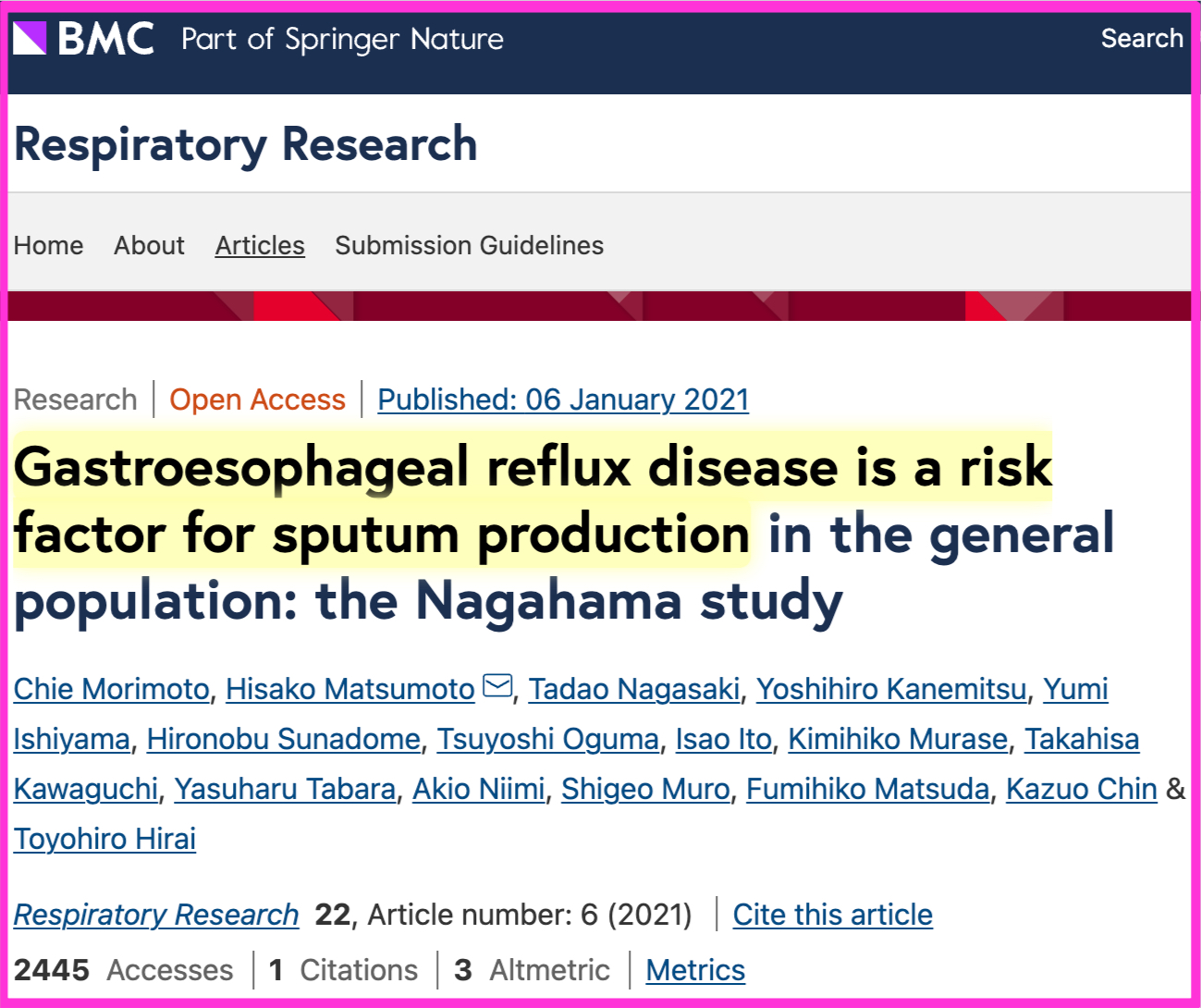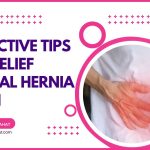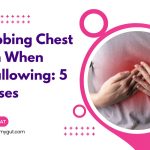Phlegm After Eating: 7 Causes & How to Differentiate (Doctor Explains).
Our content is not intended nor recommended as a substitute for medical advice by your doctor. Use for informational purposes only.
Phlegm after eating is a common symptom reported by many. It may be due to primary chest diseases such as a recent upper respiratory tract infection or chronic bronchitis. Also, some digestive conditions, such as acid reflux, may play a role.
Phlegm is produced by specialized (mucus-producing) cells in your respiratory tract (throat, trachea, bronchi). Also, the phlegm may pass from the nose to your throat.
Phlegm is typically a respiratory symptom that is not linked to eating. However, some digestive diseases may cause increased phlegm after eating.
In this article, I will walk you through all the possible causes of phlegm or excess mucus after eating and how to differentiate between them.
The cause of phlegm after eating depends on how long you experience it.
Table of Contents
1. GERD (gastroesophageal reflux disease or acid reflux).
GERD (gastroesophageal reflux disease) or chronic acid reflux is a condition that results from recurrent reflux of stomach acid into the esophagus and throat.
The refluxed acid leads to irritation and inflammation of the esophagus and/or the throat.
Many patients with acid reflux may experience phlegm after eating due to acid reflux irritating the throat.
GERD is a widespread condition affecting up to 20% of people (reference). Heartburn and regurgitation of bitter fluid or food particles into the throat after eating.

Symptoms (how to know if phlegm after eating is due to GERD):
- Heartburn (a burning sensation in the middle of the chest) can start suddenly.
- The heartburn often starts after meals or at night.
- The frequency of heartburn determines the severity of GERD. GERD is considered severe when heartburn occurs every day for weeks or months.
- Regurgitation of bitter fluid or food particles into your larynx or mouth.
- Regurgitation and heartburn may lead to choking and coughing at night.
- Phlegm after eating.
- Difficulty swallowing food.
- Nausea and/or vomiting.
- Anorexia (loss of appetite).
- Increased salivation (water brash).
- Globus sensation in the throat.
How to get rid of GERD-related phlegm after eating.
The key to treating phlegm due to GERD is to control the acid reflux causing irritation to the throat and respiratory passages.
Best remedies and treatments include:
- Proton Pump inhibitors (to reduce stomach acid) such as Omeprazole, Esomeprazole, and dexlansoprazole.
- Lose weight if you are obese.
- Head elevation (avoid recumbent position for 3 hours after eating).
- H2 blockers (such as famotidine) and Prokinetic medications may also help.
- Head elevation during sleep (to protect your throat from acid reflux that causes irritation and mucus after eating.
- Surgical correction is preserved for patients with refractory symptoms.
2. Chronic bronchitis (mainly due to smoking).
It is estimated that 3% to 7% of people have chronic bronchitis with chronic cough and mucus (phlegm).
Bronchi are the smaller trachea branches, forming a tree of small tubes that deliver air to your lung tissue.
Bronchitis is an irritation or inflammation of your bronchi. It is mainly caused by infection and smoking.
The irritation of the bronchi leads to excess mucus secretion, which presents as phlegm (mucus) and cough.
When the inflammation of the bronchi becomes prolonged, it is called (chronic bronchitis).
A recent 2021 study concluded that people with GERD are twice more likely to have mucus (phlegm). The same study also found that post-nasal drip (another cause of phlegm after eating) is very common among GERD patients.
Causes of chronic bronchitis:
- Smoking is the most common cause of chronic bronchitis. Consider chronic bronchitis as a cause of your phlegm after eating if you are a smoker.
- Passive smoking: chronic smoking doesn’t only affect the smoker; living with a smoker will make you a passive smoker and may cause chronic cough and expectoration of mucus.
- Chronic obstructive pulmonary disease: a condition that develops in the long-term smoker.
- Industrial pollutants & toxic chemicals (recurrent exposure).
- Recurrent infections (influenza viruses, bacterial infections, etc.)
- Bronchial asthma.
- Cystic fibrosis.
Symptoms (how to suspect chronic bronchitis):
- Chronic or recurrent cough (most days of the month, lasting at least three months).
- 50% of chronic bronchitis sufferers have phlegm.
- The mucus (phlegm) color varies in color (white, yellow, greenish, or blood-tinged in some cases).
- Positive history of smoking or exposure to irritants such as industrial pollutants.
- Fever (rare with chronic bronchitis).
- Chest pain due to muscle strain in recurrent cough.
- Wheezes (less frequent).
Treatment of chronic bronchitis includes eliminating the causes (such as smoking and infection) and cough sedatives, expectorants, and bronchodilators.
3. Recent Upper respiratory infection (recent onset phlegm after eating).
Think of an upper respiratory tract infection only if you have a recent onset of phlegm after eating.
Acute bronchitis, pharyngitis, common cold, or influenza may present with excess mucus that may be more notable after eating.
Acute upper respiratory infections are common (especially in winter) and are caused predominantly by viruses such as:
- Influenza viruses.
- Rhinoviruses
- Respiratory synthetical viruses.
- Coronaviruses (including COVID-19).
However, bacterial infections may also cause upper respiratory infections (especially pharyngitis and tonsilitis).
Symptoms include:
- Acute onset fever (often low grade with viral infections).
- Sore throat.
- Excess mucus (Phlegm).
- Painful swallowing.
- Headaches.
- Generalized malaise (fatigue and muscle aches).
- Runny nose.
- Burning sensation in the nose or throat.
- Anorexia (loss of appetite) and nausea.
The condition is often self-limiting in most cases (within a few days). Upper respiratory tract symptoms are often closely similar and Considered COVID-19 infection. Always check your doctor to exclude the possibility of COVID-19.
4. Food allergies.
Food allergy is an allergic immune reaction to certain food or food components.
It is a relatively common condition affecting about 2-5% of the population. It is even more common among children, reaching about 6% (reference).
Food allergy causes digestive symptoms and extra-intestinal manifestations such as skin rashes, wheezes, and phlegm.
The attack of allergy often starts after eating certain foods such as:
- Eggs.
- Cow milk.
- Nuts and peanuts.
- Seafood.
Symptoms:
- Recent history of ingesting one or more of the offending foods.
- Diarrhea, cramps, nausea, vomiting and bloating.
- Bloody stools in some cases.
- Skin allergy as eczema (atopic dermatitis).
- Urticaria and angioedema (swollen lips, eyes, etc.).
- Asthma, cough, expectoration of phlegm after eating the trigger food.
5. Post-nasal drip (rhinitis & Sinusitis).
Post-nasal drip refers to the excess passage of mucus from the nose and/or nasal sinuses to the throat. It occurs with acute and chronic nasal or sinus conditions such as rhinitis and sinusitis.
In healthy people, it occurs physiologically, but it is not felt as the amount of mucus is small and is mixed with saliva.
In infections or allergies, excess amounts of mucus may pass through the posterior openings of your nose into the throat, causing symptoms such as:
- Phlegm after eating.
- Cough.
- Sore throat.
- A sense of a foreign body in the throat (globus throat).
- Epigastric pain and nausea (due to excess mucus in the stomach).
- A painful ear infection may develop if the mucus plugs into the eustachian tube connecting your throat to your ears.
6. Laryngopharyngeal reflux
Your esophagus has two muscle rings; one at its lower end (called the lower esophageal sphincter) and the other at its upper end (called the upper esophageal sphincter.

When the acid reflux passes the upper esophageal sphincter, it can cause Laryngopharyngeal reflux (LPR). LPR can occur without the other symptoms of acid reflux (such as heartburn).
Symptoms of LPR are similar to the throat symptoms of GERD, including:
- Sore throat (pain).
- A sense of foreign body in the throat (globus sensation).
- Increased mucus in the throat (phlegm after eating).
- A sensation of sore fluid in your throat.
- Painful swallowing.
7. Other less frequent causes
- Pharyngeal tumors.
- Zenker’s diverticulum.
- Laryngitis.
- laryngeal neoplasm
- Laryngeal foreign body.
- Aspiration or foreign body in the trachea or bronchi.
- Pneumonia.
- Lung access.
- Tuberculosis.
- Achalasia of the esophagus.
- Medications.
When to worry about phlegm after eating?
See a doctor for phlegm after eating if it is:
- Progressive leading to trouble eating.
- Associated with severe or persistent caught.
- Passage of blood-tinged mucus.
- Progressive shortness of breath.
- Attacks of wheezes or dyspnea.
- A persistent sense of a foreign body in your throat.
- Associated with fever.
- Associated with skin allergy, swollen lips, etc.
- Evidence-based
- Written by a doctor.






